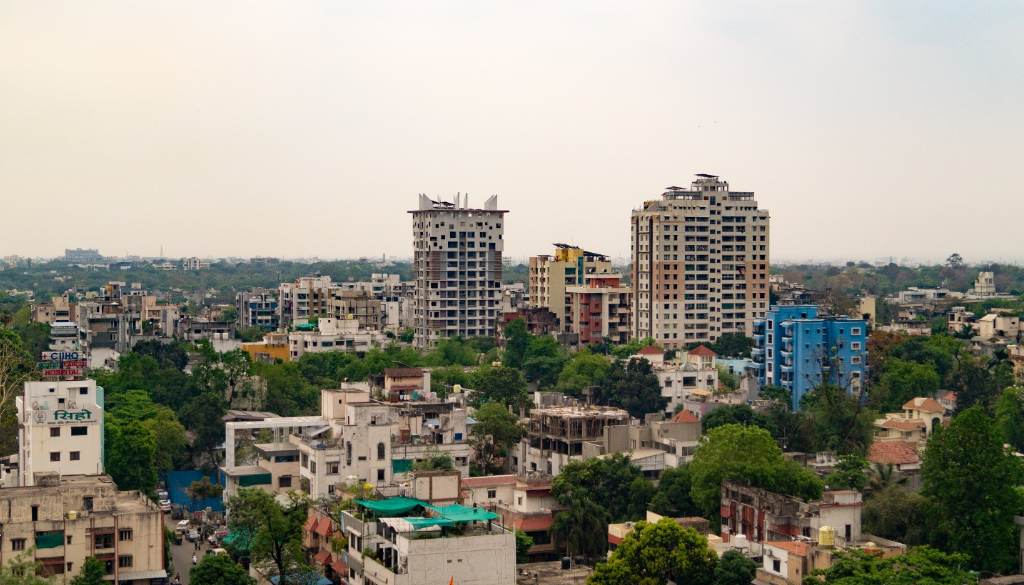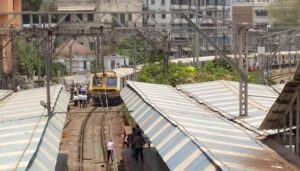Nagpur takes the lead with India’s first city-specific Zero Carbon plan for its buildings

Nagpur, 4th March, 2024:Nagpur city has embarked on an ambitious journey towards sustainable development by launching the Zero Carbon Buildings Action Plan (ZCBAP). It sets a precedent for the state of Maharashtra, and is also a pioneering effort to boost building sector decarbonisation, contributing to India’s net zero by 2070 target.
The plan includes a holistic roadmap covering public buildings, government-led affordable housing, commercial buildings as well as homes, and an implementation strategy to achieve net-zero buildings city-wide by 2050. The roadmap further includes actions to help reduce greenhouse gas (GHG) emissions in the context of choice of building materials, and how buildings are designed, built, managed and deconstructed.
Residential, commercial, and institutional buildings were responsible for 58% of Nagpur’s total energy consumption and for 56% of the city’s GHG emissions in the year 2017-18, according to Nagpur’s Climate Resilient City Action Plan developed by Nagpur Municipal Corporation (NMC) and Nagpur Smart and Sustainable City Development Corporation Limited (NSSCDCL), with technical assistance from ICLEI-Local Governments for Sustainability, South Asia and UN-Habitat.
The ZCBAP has been led by the NSSCDCL along with NMC, in collaboration with international partners such as the World Resources Institute (WRI), the Global Environment Facility (GEF), the United Nations Environment Programme (UNEP), and ICLEI South Asia through the Zero Carbon Buildings Accelerator (ZCBA) project.
Emani Kumar, Executive Director, ICLEI South Asia, said, “The ZCBAP represents a significant milestone in Nagpur’s low emission development, aligning with national and international goals for sustainable development and climate action. It is aimed at transforming Nagpur into a city where all buildings, whether new constructions or existing structures, achieve net-zero carbon emissions by 2050. This plan is adeptly interwoven with India’s Nationally Determined Contributions (NDCs) that focus on reducing GHG emissions intensity of its GDP by 45% by 2030 from 2005 levels and on achieving the country’s long-term strategy to reach net-zero emissions by 2070.”
Prithviraj BP, IAS, Chief Executive Officer (CEO), NSSCDCL said: “This plan aligns with the Climate Smart Cities Assessment Framework (CSCAF), India’s Long-Term Low-Carbon Development Strategy, and the Urban Outcomes Framework, among others instrumental in tracking and assessing urban sustainability and climate readiness. The action plan also supports Nagpur in meeting its global commitments with the Global Covenant of Mayors for Climate & Energy (GCoM) and the Race to Zero campaign.”
Net-zero emissions refer to reducing GHG emissions to the lowest possible amount, and balancing out any remaining emissions by using natural processes that absorb gases, like the absorption done by green cover and oceans. Net-zero buildings aim to minimise GHG emissions from construction materials, building use, and end-of-life demolition by employing reduction strategies across their entire lifecycle.
The ZCBAP is structured around a phased approach consisting of targeted interventions at various stages of a building’s life cycle. The action plan is segmented into stages such as pre-construction, during construction, occupancy, and end-of-life, each carrying a set of interventions designed to minimise carbon emissions. For instance, during the pre-construction phase, interventions focus on promoting passive and low-carbon architecture and design supplemented with a policy and regulatory framework. In the construction phase, interventions address on-site practices and resource efficiency, while the occupancy phase includes interventions ensuring operational energy efficiency and occupant well-being. Finally, the end-of-life phase comprises interventions that aim at responsible deconstruction and material recycling.
The timeline for ZCBAP outlines a series of interventions targeting different stages of a building’s life, starting in 2023 with short, medium, and long term interventions. It sets clear short-term goals for all new buildings to be net-zero by 2030 and extends this ambition to all buildings by 2050 for carbon neutrality. Additionally, the plan underscores comprehensive strategies such as capacity building and financially enabling measures to support the implementation of action plan interventions, ensuring stakeholders are equipped to implement and sustain green building practices, which are vital for the city-wide decarbonisation effort.
Nagpur is already making significant strides towards sustainability in its architecture, with numerous buildings including the illustrious Metro Bhavan and the Forest Department Corporation of Maharashtra (FDCM) Bhavan both embracing green building certifications like the Indian Green Building Council’s Platinum rating. Notably, the Maha Metro project features the longest multi-layer viaduct in Asia, reflecting innovative sustainability in transport infrastructure. Across sectors, from IT, manufacturing and healthcare to residential living and hospitality, Nagpur demonstrates a city-wide commitment to integrating green practices across key buildings.
This plan also seeks to improve the quality of life for Nagpur residents through healthier, more sustainable living environments. “By engaging a wide range of stakeholders, including government officials, domain experts, NGOs, builders, and developers, Nagpur is fostering a collaborative approach to sustainability, ensuring that the ZCBA is comprehensive, inclusive, and effective in achieving its ambitious goals,” said Dr. Abhijeet Chaudhari, IAS, Municipal Commissioner and Administrator, NMC.
The action plan is further bolstered by case studies from India (Indira Paryavaran Bhawan in New Delhi, Institute of Rural Research and Development in Gurugram, Galaxy School in Rajkot to name a few) and around the world, providing practical examples and encouraging knowledge transfer. “The city government is keen to take the lead and demonstrate the benefits of ZCB actions in public buildings in particular. To kickstart action on-ground, a model request for proposal (RfP) document has been developed with technical support from ICLEI South Asia and the ZCBA project. The document will help guide the integration of low-carbon and sustainable measures in Nagpur’s future public buildings, including offices, healthcare spaces and affordable housing,” said Kumar.
A snapshot of the Zero Carbon Buildings Action Plan, encapsulating interventions across the four building lifecycle stages and cross-cutting measures:
Pre-Construction: Buildings should be designed and planned to include passive cooling design and low carbon materials and technologies such as Compressed Stabilised Earth Blocks, cavity walls, rat trap bond, among others. The importance of reducing energy consumption is emphasised by prescribing that occupied spaces in buildings be designed to maximise daylight and cross ventilation. Rooftops should be designed to be more solar photovoltaic ready.
During Construction: The plan encourages in-situ production of sustainable building materials such as sun-dried bricks. It promotes the use of concrete mixes with
industrial and agricultural by-products and natural resins in non-structural parts as well as structural parts of buildings where possible. For materials that are sourced away from the construction site, it stresses on ensuring these are procured locally or within the region .
Occupancy Stage: Focus on improving energy performance by undertaking energy audits to understand energy-use patterns, deploying BEE star-rated equipment and appliances in common areas and habitable spaces, and implementing building envelope improvements related to shading devices/chajjas, window glazing materials and installation of UV films, high reflective and low VOC paints, and cool/green roof techniques for existing buildings. Government offices are required to periodically replace old low-efficiency equipment and appliances with high-efficiency models. Prescribes use of rooftop solar PV and other off-site renewable energy options to move towards net-zero energy use.
End of Life: Measures to ensure sustainable building deconstruction instead of demolition are recommended, such as submission of a Building Deconstruction Plan when initiating redevelopment projects and training of demolition contractors.
Circularity: It outlines requirements on the use of recycled construction and demolition (C&D) waste materials to promote circularity, along with demonstration pilot projects in public and affordable housing projects to begin with.
Cross-Cutting: Enabling measures to supplement the interventions mentioned above, such as adoption of appropriate urban design and planning to encourage wind-induced air flow and inclusion of nature-based solutions to reduce urban heat island effect at the neighbourhood-scale; encouraging use of materials from manufacturers that publish Environmental Product Declarations (EPD); creation of a skilled local workforce that is able to design and construct zero-carbon buildings; and financial measures and models to boost net-zero building adoption among different stakeholders.








